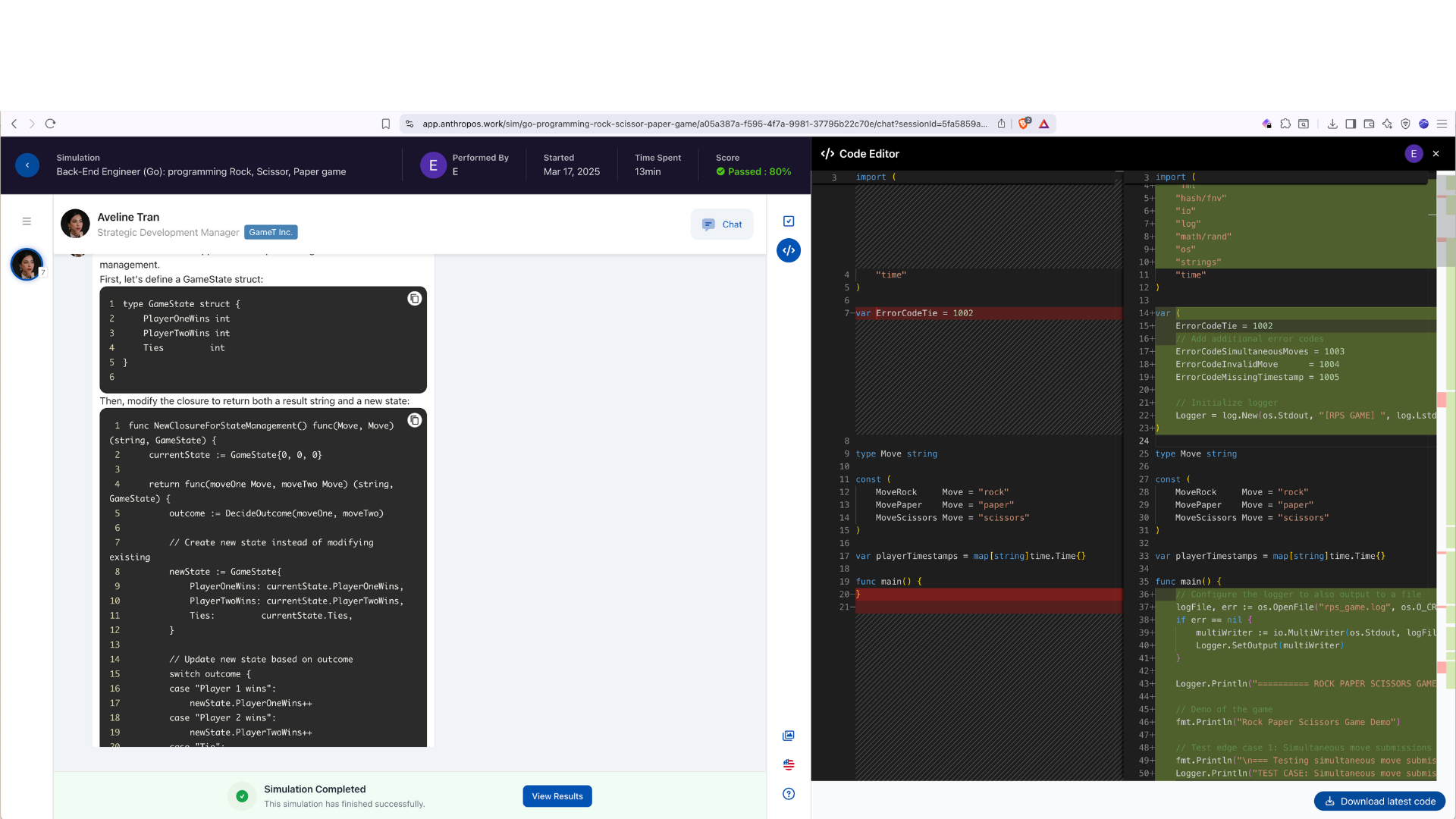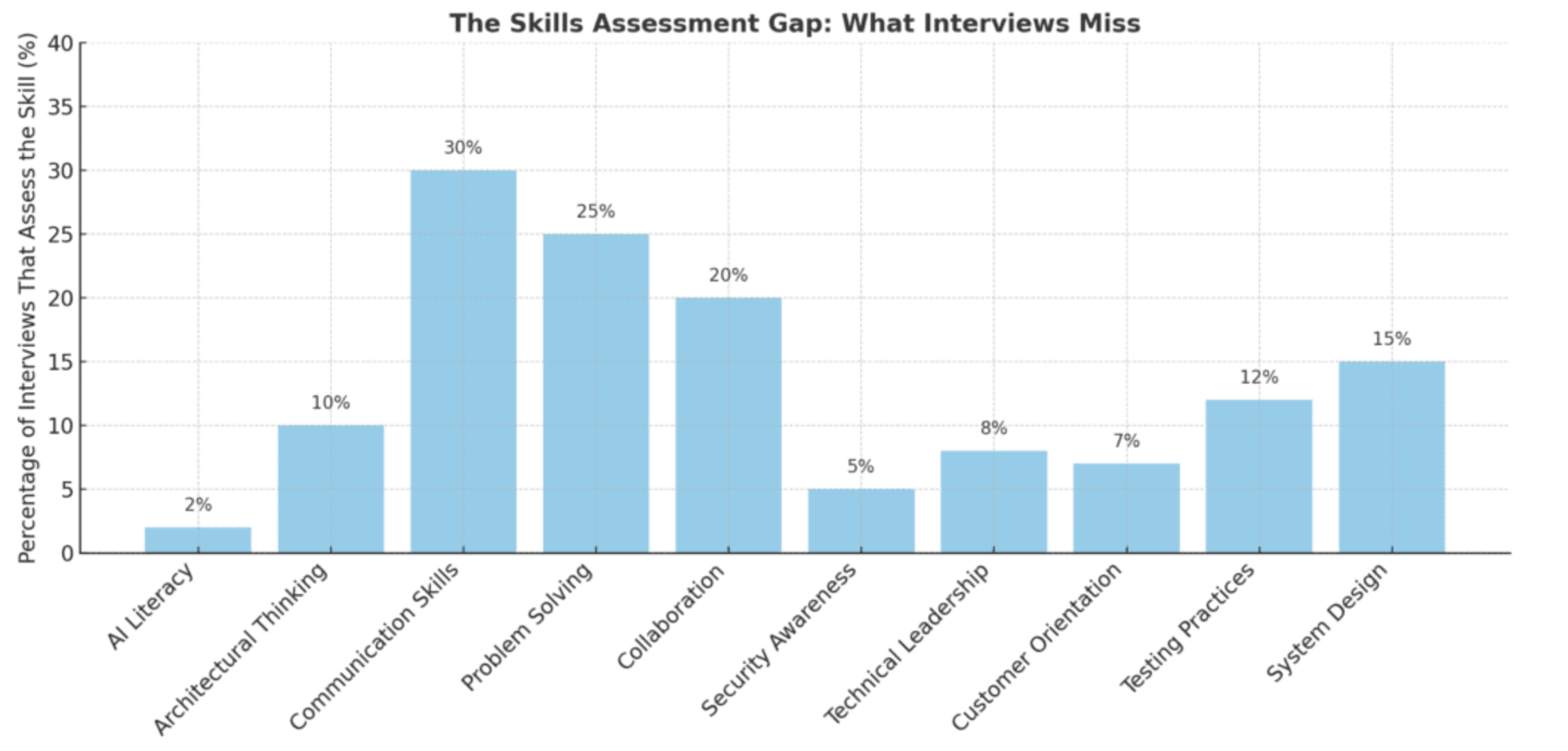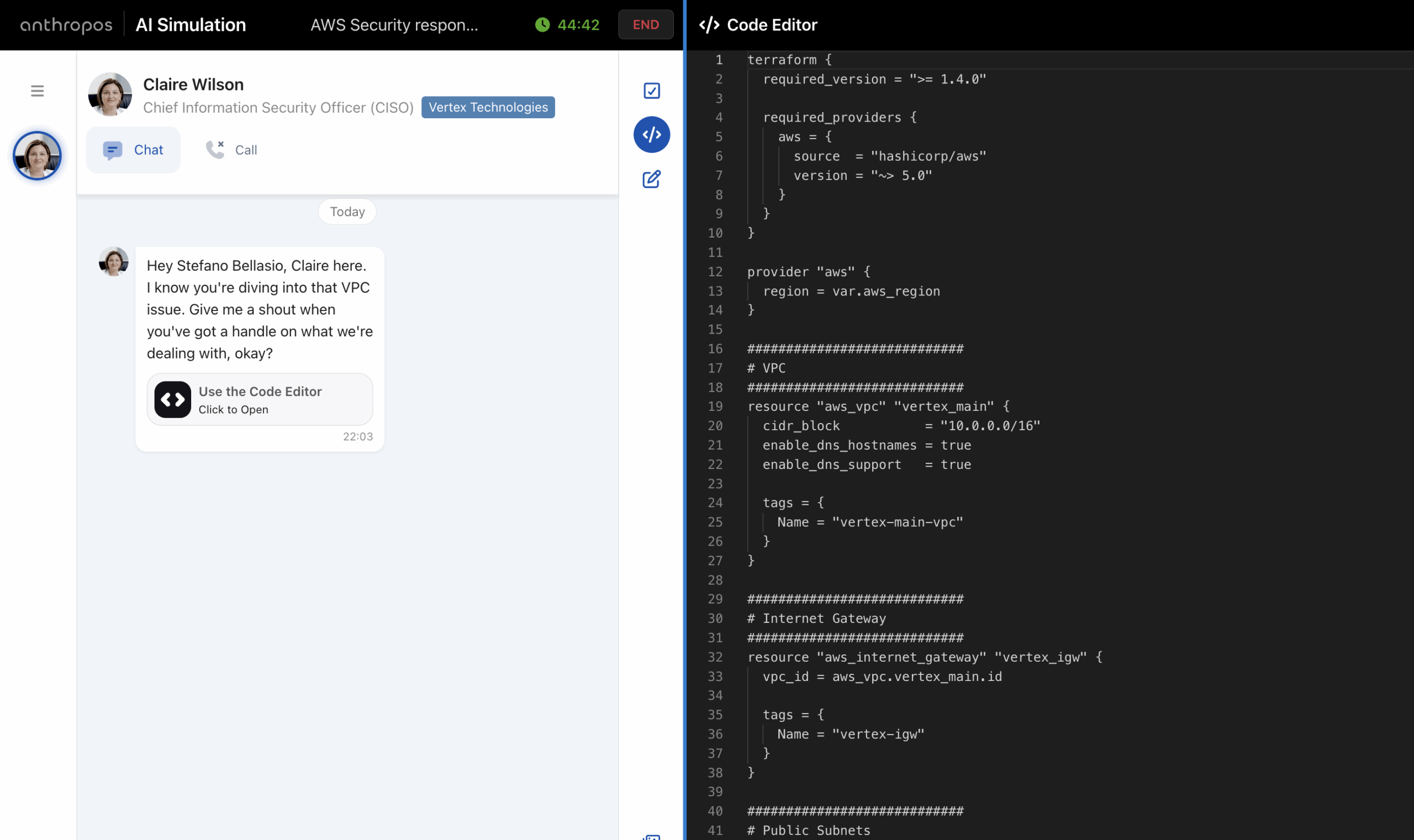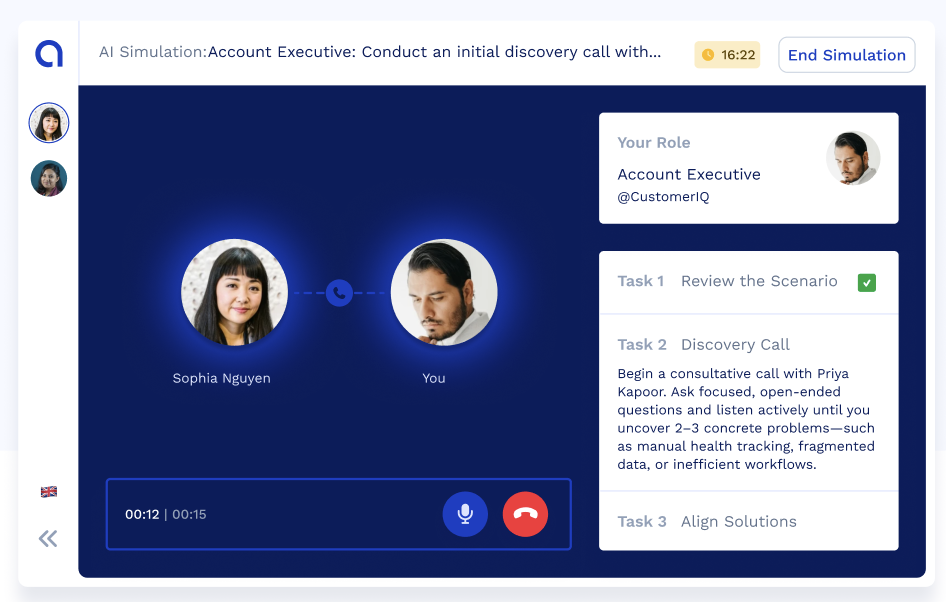For years, the live coding session has been the gold standard for hiring software engineers, front-end developers, and other technical roles. A candidate joins a Google Meet or Teams call, a couple of senior engineers log in, and for the next hour the candidate is expected to solve coding challenges live, while explaining their thought process.
On paper, it sounds like a perfect format. You get to watch how someone thinks, writes code, and communicates under pressure—all at once. But in reality, live coding interviews often fail both candidates and companies. They are expensive, disruptive, and unreliable when it comes to predicting actual job performance.
For most organizations, it’s a process that takes two or more experienced developers away from critical work for at least an hour. Multiply that by every candidate in the pipeline, and suddenly your engineering team is spending hundreds of hours each quarter evaluating candidates instead of building products. It’s a hidden cost few teams account for.
And yet, companies keep doing it—because they believe it’s the only way to evaluate how a developer approaches real-world problems. Until now.
The Hidden Cost of Live Coding
Live coding interviews are deceptively expensive. In most technical hiring processes, two engineers—often senior ones—conduct the session together. That’s at least two hours of highly paid engineering time for every candidate: one hour live, and another reviewing the results.
If you’re hiring for multiple roles or handling high application volume, these costs compound quickly. For scaling teams, this creates an impossible trade-off: either spend huge amounts of engineering time on interviews or risk making rushed, uninformed hiring decisions.
The inefficiency doesn’t stop there. Every time you pull engineers into interviews, you’re pulling them away from building, fixing, or maintaining the products that drive your business. For high-growth companies, this kind of constant context-switching impacts productivity, slows down releases, and frustrates the team.
Ironically, it also makes hiring slower. Because technical staff are busy interviewing, candidates often wait days—or weeks—for a slot, dragging out the process and risking top talent being scooped up by faster competitors.
Why Live Coding Fails Candidates
The other hidden issue? Live coding disadvantages great developers.
Technical candidates often underperform in these sessions, even when they have the skills. Sitting on a video call, solving problems in real time, and knowing you’re being watched by multiple senior engineers isn’t just stressful—it’s unnatural.
Even talented developers stumble in this format, making mistakes they wouldn’t make in a normal work environment. They’re juggling problem-solving, explanation, and social performance simultaneously, which introduces unnecessary anxiety and cognitive overload.
Ironically, the setup ends up filtering out capable engineers who might thrive in the actual job—but who don’t shine under the artificial pressure of the live interview.
At the same time, the opposite problem also exists: candidates who excel at live coding under controlled conditions but struggle to deliver in real-world, messy, collaborative environments. The result is a process that neither predicts performance accurately nor creates a positive candidate experience.
Companies Want to See How Developers Think
Despite its flaws, live coding persists for one reason: companies believe it’s the best way to understand how developers approach problems. Watching candidates explain why they make certain design decisions, how they debug issues, or why they prefer one data structure over another provides insight into their thinking—not just their technical output.
This desire is valid. But it doesn’t require live interviews to achieve. What’s missing is a way to observe how candidates work, think, and communicate in a realistic setting without pulling your engineers into hours of calls—or putting candidates through high-stress situations that don’t reflect the real job.
This is where Anthropos AI-powered simulations offer a better way forward.

A Smarter Alternative: AI-Powered Coding Simulations
Anthropos transforms technical hiring by replacing stressful live interviews with realistic AI-driven simulations that replicate the actual work environment. Candidates are given an immersive scenario where they can code in a real integrated development environment (IDE), interact with AI “stakeholders,” and solve challenges that reflect your company’s tech stack and processes.
Instead of artificial puzzles or abstract exercises, candidates engage in simulations that feel like the real job. They might fix bugs in a complex codebase, design a feature under tight deadlines, or troubleshoot production issues—all while explaining their decisions to simulated teammates and external stakeholders.
By combining technical implementation with situational challenges, Anthropos captures the same insights companies seek in live coding interviews—but without the inefficiencies, stress, and bias.
How Simulations Work in Practice
When candidates complete an Anthropos simulation, they’re assessed across both hard and soft skills simultaneously.
They write actual code, using the same tools they’d use on the job, while Anthropos evaluates architectural decisions, debugging strategies, and technical accuracy. At the same time, AI actors simulate the human side of the job: teammates asking for updates, product managers requesting clarifications, or customers raising new requirements.
Candidates are expected to explain their reasoning, defend their trade-offs, and demonstrate communication skills—just like they would in a real project. This is where Anthropos bridges the gap between technical assessment and behavioral evaluation, giving hiring teams the holistic view they’ve been missing.
Even better, managers can add company-specific variables to simulate scenarios that match their actual workflows, priorities, and stakeholder interactions. It’s personalized, predictive, and far closer to the real-world demands of your team.

Tracking AI Usage Transparently
Another challenge for hiring today: candidates increasingly use AI tools like ChatGPT during assessments. Anthropos doesn’t ignore this reality—it measures it.
The platform detects when and how candidates rely on AI, showing hiring managers exactly how much assistance they used and how effectively they integrated AI-generated code into their solution.
Rather than banning AI tools outright, Anthropos lets companies decide what’s acceptable based on their culture. Some organizations encourage using AI strategically, while others want to evaluate baseline skills without assistance. Anthropos provides the transparency to make informed, consistent hiring decisions either way.
Better Candidate Experience, Faster Hiring
By eliminating stressful live coding sessions, Anthropos creates a smoother, more candidate-friendly hiring process. Developers engage in an environment that feels like real work rather than an exam, allowing them to perform at their best.
Because simulations don’t require senior engineers to sit in on every interview, companies can screen more candidates in less time. Hiring teams move faster, without compromising quality, and top candidates stay engaged throughout the process instead of dropping out due to delays.
This balance of rigor and scalability leads to shorter hiring cycles, better candidate satisfaction, and stronger employer branding in a competitive market for technical talent.
From Guesswork to Predictable Hiring
The live coding interview was designed to solve an important problem—understanding how developers think—but in today’s world, it introduces more challenges than it solves. It’s costly, disruptive, and often inaccurate at predicting performance.
AI-powered simulations from Anthropos represent the next evolution in technical hiring: a smarter, more scalable way to evaluate candidates on the skills and behaviors that truly matter. By combining real coding tasks with collaborative, scenario-based assessments, companies get a 360° view of each candidate—without wasting internal resources or putting candidates under unnecessary pressure.
If live coding interviews are slowing your hiring process and failing to identify top performers, it’s time to rethink the approach. With Anthropos, you can evaluate engineers based on real work—not rehearsed answers or performance under stress—and hire with greater confidence, speed, and accuracy.
September 2, 2025


